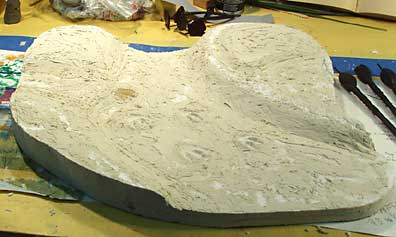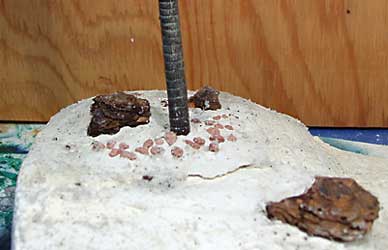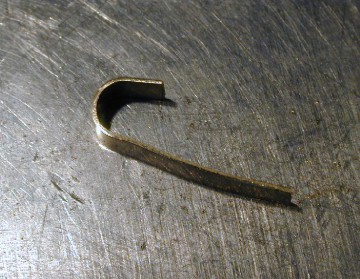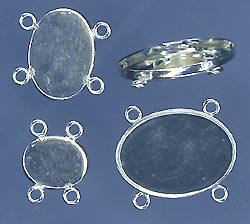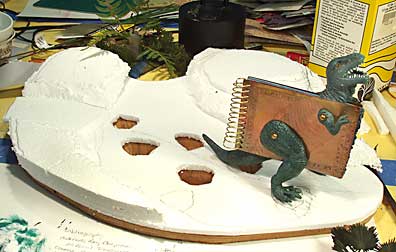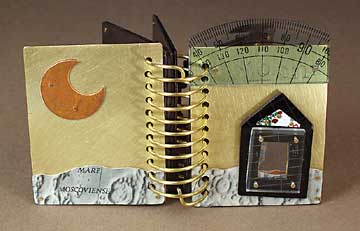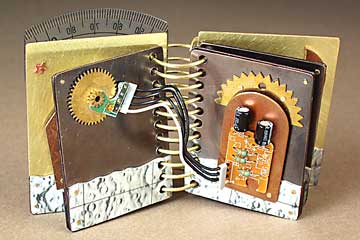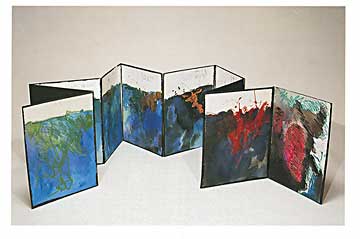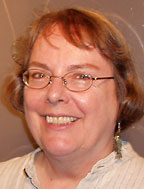7 Extinction Events Finished!
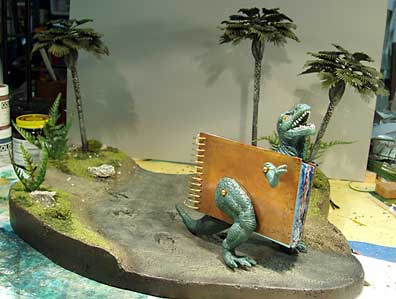
I’m very pleased with this. I love having a setting for the book. Unfortunately, when the book is open, the dinosaur doesn’t look right. I don’t think it’s a fatal flaw.
After building up the hills I painted the whole thing black, then put on a layer of very dark earthy brown. I dry-brushed a lighter brown on the hill areas and grayish ochre on the creek bed. Then I painted the rocks several light shades. Then I put on the grass, palm leaves, bushes, etc. These two web sites were very helpful: Conquest Miniatures and Dr. Faust’s Painting Clinic. Email me if you want more details, I'm leaving out some here because it's not that interesting.
When I got the idea to do the landscape, I thought “that’s a hobby, it should be fairly easy to do. Not like the hard and tedious work of making jewelry or metal objects.” I was so wrong! There are lots of different ways to accomplish a given effect. You have to know your materials and a wide variety of techniques.
It was hard to find the exact materials that these online tutorials talk about. Our local “big” hobby store didn’t have much of a selection of landscaping materials or paint. I went to J & M’s Hobby House in San Carlos (California) and was able to get most of what I needed. This is a nice hobby store. They have K&S metal supplies (brass and copper in sheet, tubing and strips). The service is good, the guy I talked to was very knowledgeable and helpful.
What’s next? I have to clean off my big worktable and take photos. I will show something of my photo process in the blog. Then I want to start on two metal projects that have been languishing on my bench for a long time. The smaller, almost finished one is a tooth icon. I’m not even sure if I’ll like it when it’s done, but I’m committed to finish it. The other is a time consuming project that I have barely started and need to get back to. I also have an idea for several more books with landscapes, but they will wait for a while.
Labels: Completed Projects
